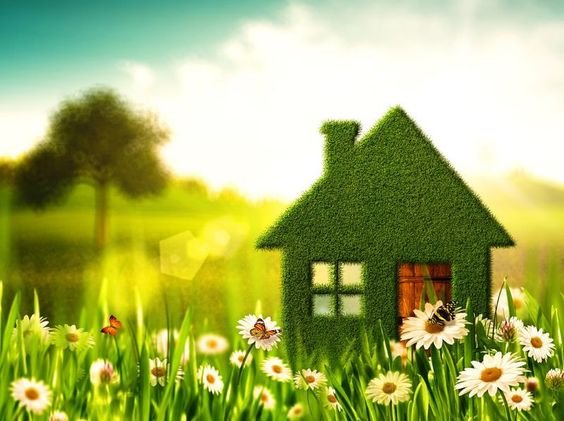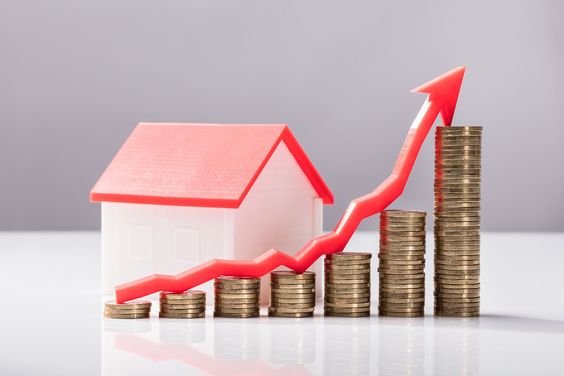The focus on health, wellness and sustainability has gained significant traction in real estate post-pandemic. Among homebuyers, green homes have surged in popularity, and with good reason. Sustainable design forms the core of green buildings, driven by the goal of enhancing water, energy and material efficiency while reducing their impact on human well-being and the environment over a building’s entire lifespan. When considering purchasing a home, assessing a building’s ‘green’ attributes is crucial, and certifications are among the most reliable ways to gauge a structure’s sustainability. Read on to discover the many benefits of investing in a green-certified building.
Different green certifications for building
In India, several rating systems guide the sustainability and performance of buildings, including the following:
Green Rating for Integrated Habitat Assessment (GRIHA)
GRIHA is India’s indigenous rating system, collaboratively developed by The Energy and Resources Institute (TERI) and the Ministry of New and Renewable Energy. This system evaluates green building designs through a comprehensive three-tier process. GRIHA ratings are based on various criteria, including site planning, water conservation, energy efficiency, waste management and ensuring a healthy living environment.
Indian Green Building Council (IGBC)
Established in 2001 as part of the Confederation of Indian Industry (CII), the Indian Green Building Council aims to create a sustainable environment accessible to all. The council’s vision is to position India as a global leader in sustainable construction practices by 2025. The IGBC focuses on advancing green building concepts and practices, providing certifications and promoting environmentally responsible real estate development.
Leadership in Energy and Environmental Design (LEED)
In India, the IGBD has embraced the Leadership in Energy and Environmental Design (LEED) system. They have introduced the LEED India rating system, primarily focusing on new construction projects. LEED is a globally recognised green building certification framework. The certification process comprises two main stages. The first is pre-certification, initiated during the conceptual design phase. Pre-certification involves documenting the feasibility of all the steps taken to attain a specific rating. The second stage is certification, which occurs upon the building’s completion. During this phase, the certification agency scrutinises all the commitments made during pre-certification to ensure compliance with the specified green building standards.
Benefits of buying a home in a green-certified building
There are many benefits of buying a house in a building with green certification. These include:
Water conservation
Water conservation is a paramount concern in India, given the country’s significant issues with water scarcity. Therefore, the preservation of water resources takes precedence in green-certified buildings. These eco-friendly structures typically implement various water-saving techniques, resulting in the conservation and reuse of approximately 30-50% of the total water usage. Methods include water metering, rainwater harvesting and efficient irrigation systems, among others.

Energy conservation
Conserving energy is a fundamental imperative for reducing the consumption of natural resources and embracing a more environmentally responsible way of life. To achieve green certification, developers are required to incorporate energy-efficient electrical and lighting systems into their designs. These energy-efficient devices consume significantly less energy, resulting in substantial energy savings, often ranging from 20-% to 30%.

Waste management
Most green certification agencies now require green homes to have an integrated waste treatment system within their premises. This system collects, reuses or repurposes disposable items and organic waste from multiple households.

Efficient daylighting
Green-certified homes are designed to allow ample natural daylight, reducing the need for artificial lighting during the day. This not only has health benefits but also leads to lower utility expenses.

Lower energy bills
Green buildings, thanks to their emphasis on natural light, typically result in 15-20% savings on energy costs. They achieve these savings through energy-efficient walls, solar heating systems and other design elements. The incorporation of natural light and solar panels significantly reduces the reliance on CFL and LED bulbs, further reducing energy consumption and expenses.

Health and well-being
Green-certified homes prioritise residents’ well-being through features like continuous air circulation, natural air purification with indoor plants, solar chimneys, exhaust fans and increased natural illumination from well-placed windows and the use of natural paints. This approach minimises reliance on electrical devices for lighting, air filtration, heating and other needs, contributing to an enhanced quality of life.

Quality of life
Builders focus on sustainable development by using eco-friendly materials such as bamboo, structural insulated panels, recycled metal and natural clay plaster. Incorporating eco-friendly materials, light-coloured interiors and furnishings enhances the overall quality of life.

Beneficial for the environment
In an era where climate change and unsustainable resource consumption pose significant challenges, environmentally conscious homebuyers seek green homes to contribute positively to the planet. They aim to lower their carbon footprint, minimise waste, and responsibly utilise shared natural resources. Additionally, they desire to reside among a community of individuals who share their passion for environmental preservation. Consequently, there is a growing demand for green buildings.

Enhanced resale potential
As green buildings gain popularity, especially among younger homebuyers eager to participate in environmental conservation efforts, their resale value is expected to increase. Investing in a green home not only aligns with eco-friendly principles but also promises favourable financial returns in the future.

Cost savings
Green homes are designed to reduce operating costs like electricity and water from day one throughout their lifecycle. Energy bills tend to spike during the summer months, when consumption is high. Green homes maximise natural lighting and air while minimising reliance on conventional electricity by using solar panels, groundwater recharge with sustainable withdrawal, rainwater harvesting and wastewater treatment and reuse. These measures can lead to significant monthly bill reductions, typically ranging from 20% to 30%, depending on the extent of energy-saving features integrated into the project.

How does living in green-certified buildings help save money?
Individual homes within green-certified buildings enjoy substantial cost savings. Here’s how these savings add up:
- Power bill savings: Residents can typically save between 15-25% on their power bills. This is achieved through maximising natural light, using solar heating systems and incorporating energy-efficient walls and roofs.
- Water bill reduction: Low-flow water fixtures and sewage treatment plant (STP)-treated water can reduce water bills by 10-20%.
- Energy and water savings: Green homes offer energy savings of 40-50% and water savings of 20-30% compared to conventional buildings in India.
- Maintenance costs: Green-certified homes come with reduced maintenance costs, with up to a 10% reduction due to the use of compost for landscaping and recycled water for flushing.
- Common area electricity savings: Energy-efficient measures like LED lighting and solar power lead to significant reductions in electricity bills for common areas. Depending on rooftop availability, it can result in up to a 70% reduction. In some cases, solar power can cover 100% of common area electricity needs, including lifts and pumps, with a payback period of 3-4 years.
- Rainwater harvesting: Over 75% of rainwater is harvested to recharge the groundwater table, minimising reliance on water tankers and promoting water self-sufficiency.
- Waste segregation: Achieving 100% waste segregation can generate potential annual revenues of around Rs 2,000 per unit from the sale of excess compost and high-value recyclables.
Depending on your monthly expenditure (on water, electricity and society maintenance), households may expect to save approximately Rs 2,000- Rs 8,000 per month or Rs 25,000- Rs 1,00,000 per annum. These significant savings contribute to the lower cost of ownership for green homes.
Housing.com POV
Investing in a green-certified building offers numerous advantages, ranging from environmental sustainability to financial benefits. These buildings prioritise water and energy conservation, waste management, efficient daylighting, and residents’ health and well-being. Moreover, they contribute to a lower carbon footprint and offer enhanced resale potential. With substantial cost savings on power and water bills, reduced maintenance expenses, and efficient common area electricity usage, living in green-certified buildings is not only environmentally responsible but also economically advantageous. Overall, embracing green living is a wise choice for homeowners seeking a sustainable and cost-effective lifestyle.
FAQs
What are the benefits of living in a green building?
Living in a green building provides the benefits of breathing fresh air, enjoying better sleep, reducing stress and leading an overall healthier life. It also lowers the risk of developing significant long-term health problems.
What are the cost benefits of green building?
On average, green buildings can result in energy savings of 25% to 50%, water consumption reductions of 10% to 40%, and lower maintenance costs by approximately 12%.
What are the benefits of green building certification in India?
Opting to live in green-certified buildings contributes to carbon emissions reduction, natural resource conservation, and enhanced indoor air quality. Additionally, such homes often offer benefits such as decreased utility bills, improved thermal comfort, and healthier living environments.
What are the challenges for green buildings in India?
The lack of skilled experts and a qualified workforce is one of the primary reasons for the slow adoption of green building practices in India. All stakeholders, from policymakers to architects, engineers to contractors and workers, lack the necessary knowledge and skills for green building construction.
Which green certification is best?
LEED (Leadership in Energy and Environmental Design) stands out as the most renowned and prevalent green building certification system in India and around the world.
Who gives green building certification?
In India, three prominent certifying agencies issue certifications under the names of Green Rating for Integrated Habitat Assessment (GRIHA), Leadership in Energy and Environmental Design (LEED) and Indian Green Building Council (IGBC) ratings.
Which is the first certified green building in India?
When it opened in 2004, the CII building held the distinction of being the first LEED Platinum-rated green building in the world outside of the United States. It also marked India's inaugural LEED-certified building.
| Got any questions or point of view on our article? We would love to hear from you. Write to our Editor-in-Chief Jhumur Ghosh at jhumur.ghosh1@housing.com |

Dhwani is a content management expert with over five years of professional experience. She has authored articles spanning diverse domains, including real estate, finance, business, health, taxation, education and more. Holding a Bachelor’s degree in Journalism and Mass Communication, Dhwani’s interests encompass reading and travelling. She is dedicated to staying updated on the latest real estate advancements in India.
Email: dhwani.meharchandani@housing.com












